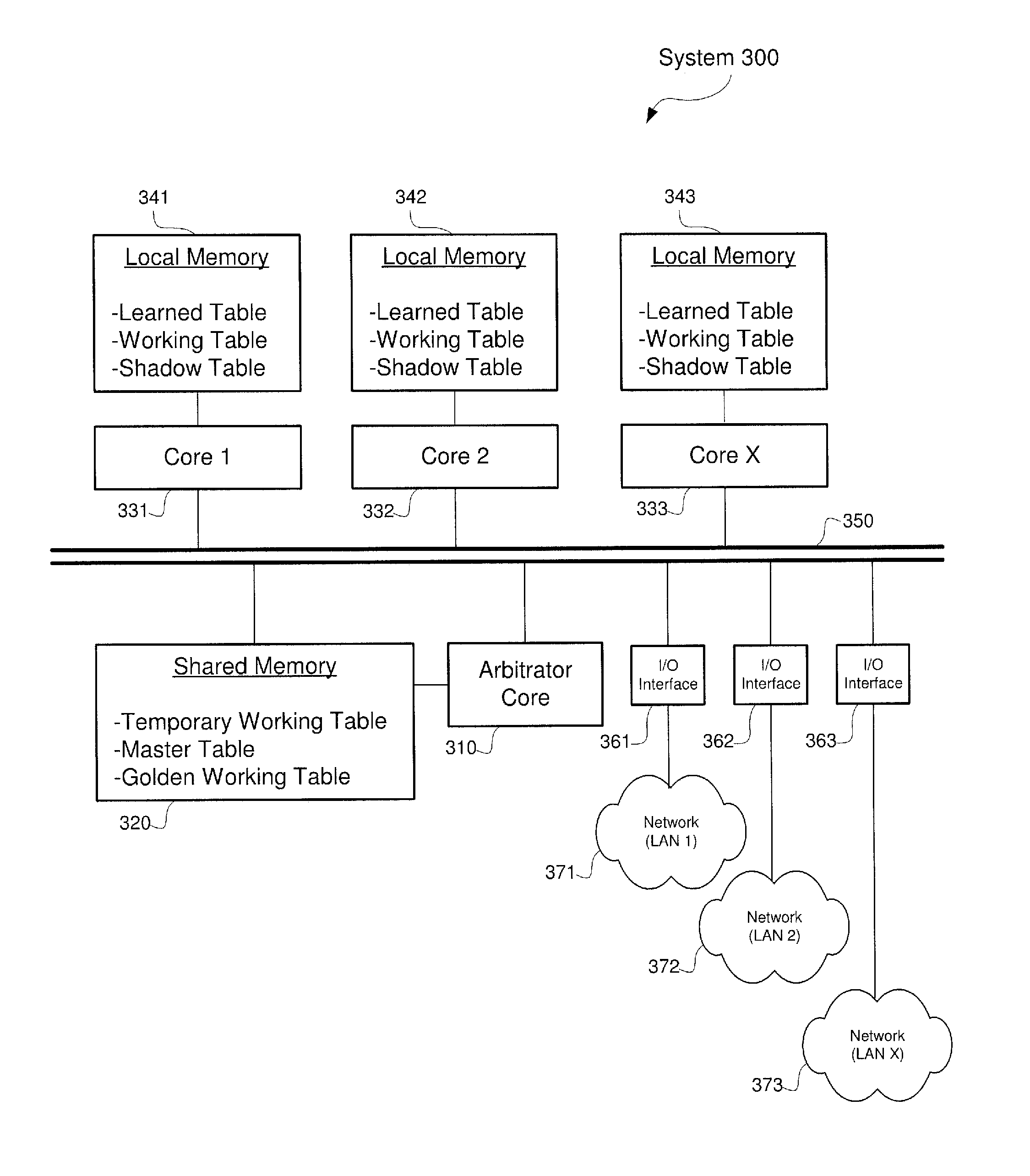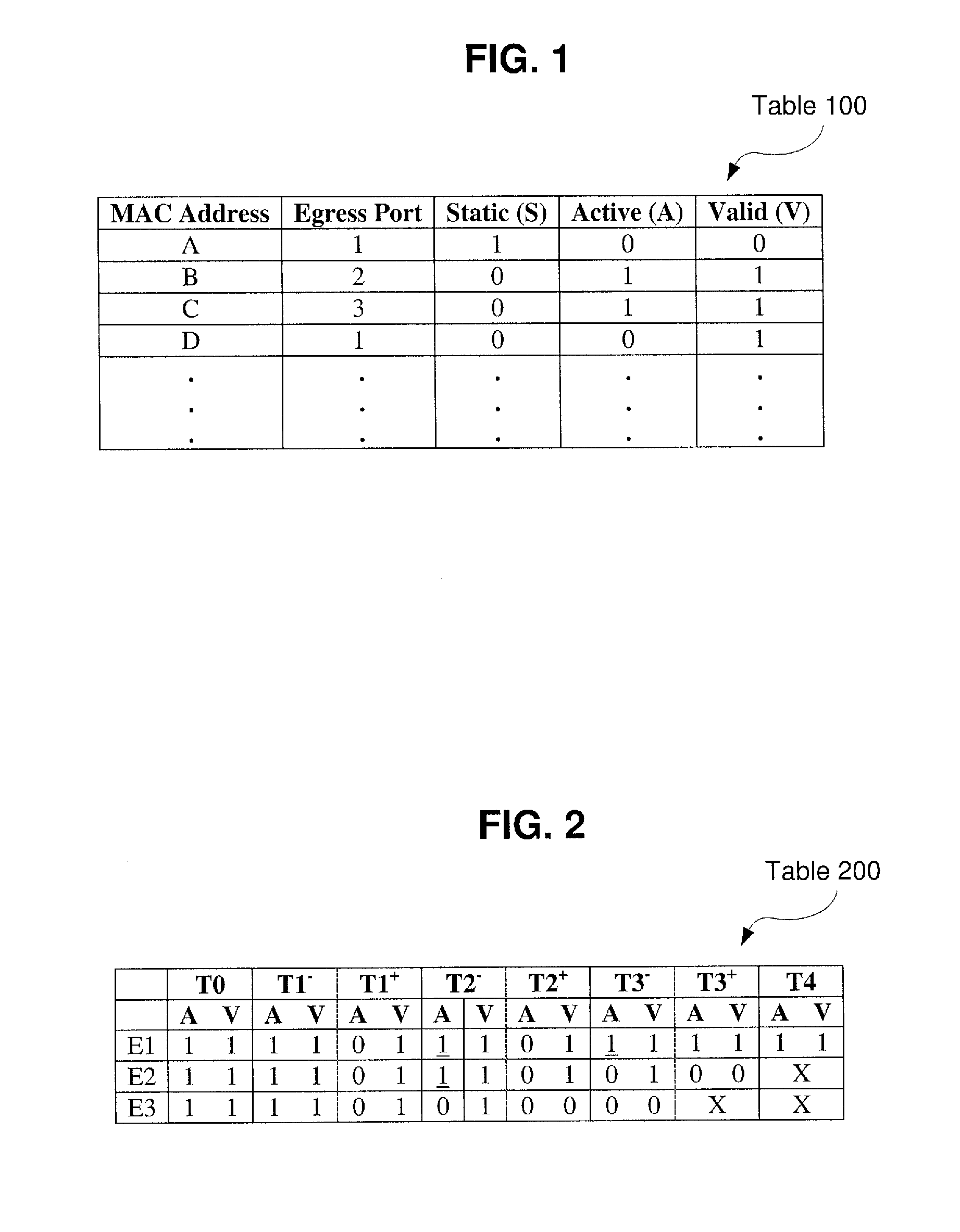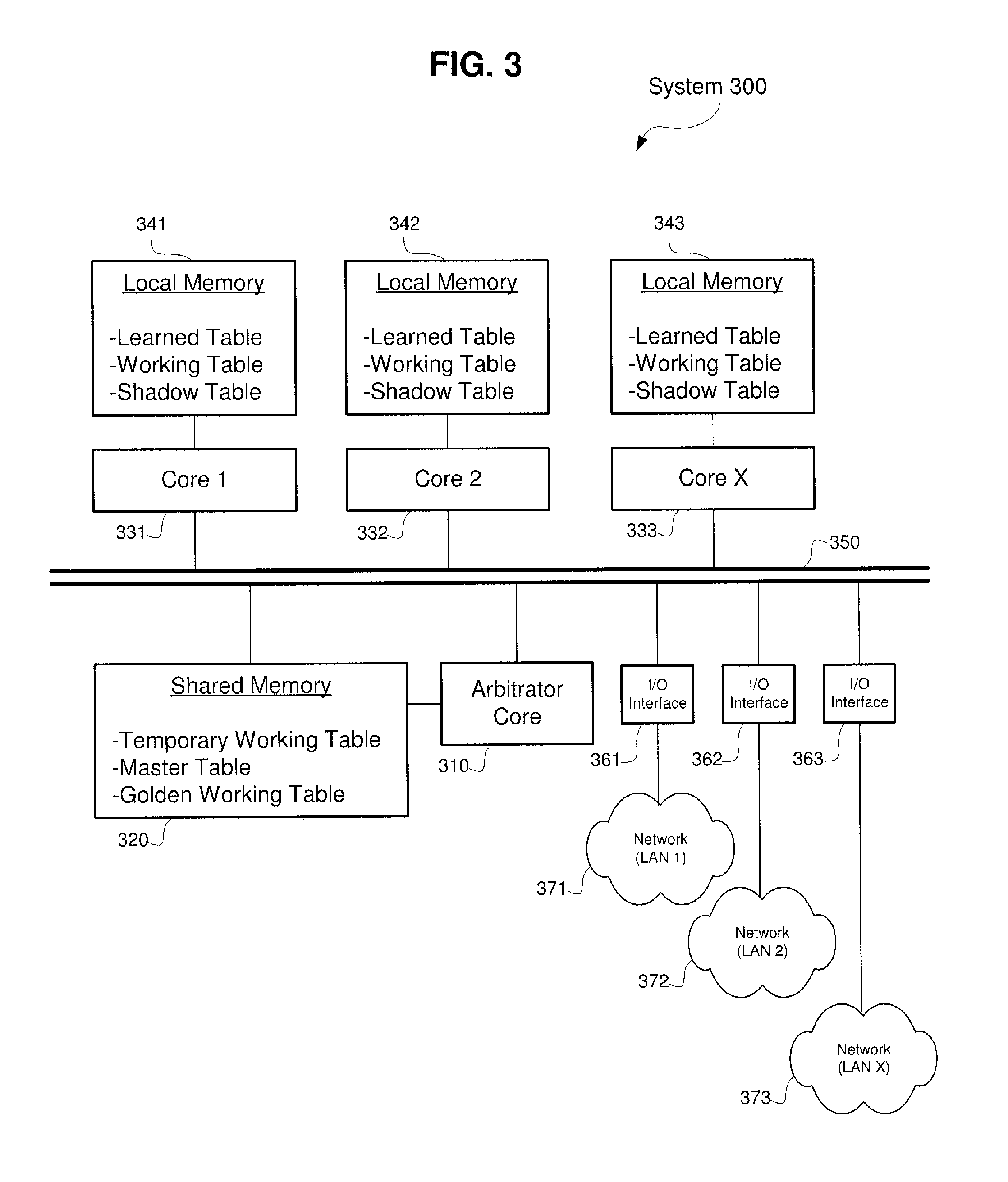System And Method for Enhanced Updating Layer-2 Bridge Address Table on Asymmetric Multiprocessing Systems
a multiprocessing system and address table technology, applied in the field of enhanced updating of layer2 bridge address table on asymmetric multiprocessing systems, can solve the problems of limited bridging utility and poor performance of implementations on asymmetric multiprocessing (“amp”) systems, and achieve the effect of improving the bridging of data over a network
- Summary
- Abstract
- Description
- Claims
- Application Information
AI Technical Summary
Benefits of technology
Problems solved by technology
Method used
Image
Examples
Embodiment Construction
[0014]The exemplary embodiments may be further understood with reference to the following description and the appended drawings, wherein like elements are referred to with the same reference numerals. The exemplary embodiments described herein relate to systems and methods for improving the bridging of data over a network. Specifically, the exemplary embodiments relate to systems and methods for optimizing the aging and learning processes. Furthermore, exemplary embodiments may also optimize the address table update algorithms to improve Layer 2 Bridge forwarding performance on asymmetric multiprocessing (“AMP”) systems.
[0015]Conventional Layer 2 bridges rely on learning and aging processes optimized for uni-processor or symmetric multiprocessing (“SMP”) systems, but do not perform well on AMP systems. Furthermore, the algorithms used to implement and update the corresponding address tables do not work efficiently on AMP systems. Accordingly, issues such as address table synchroniza...
PUM
 Login to View More
Login to View More Abstract
Description
Claims
Application Information
 Login to View More
Login to View More - R&D
- Intellectual Property
- Life Sciences
- Materials
- Tech Scout
- Unparalleled Data Quality
- Higher Quality Content
- 60% Fewer Hallucinations
Browse by: Latest US Patents, China's latest patents, Technical Efficacy Thesaurus, Application Domain, Technology Topic, Popular Technical Reports.
© 2025 PatSnap. All rights reserved.Legal|Privacy policy|Modern Slavery Act Transparency Statement|Sitemap|About US| Contact US: help@patsnap.com



